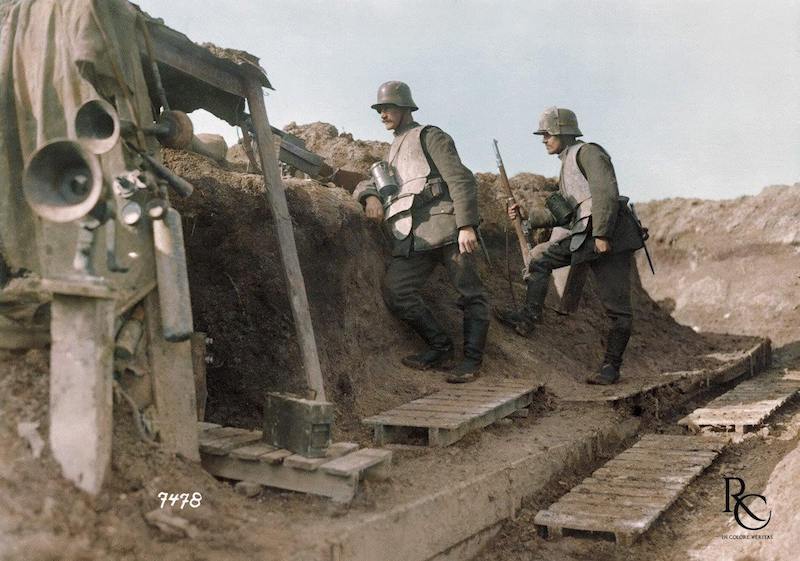Get the weekly SPARTANAT newsletter.
Your bonus: the free E-Book from SPARTANAT.

First World War: Trench Armor as Body Protection
This text discusses the development and use of trench armor by German soldiers during World War I, particularly focusing on the frontal armor worn on helmets. The text also mentions General Ludendorff's perspective on the use of armor in combat. The photo depicted is speculated to be staged for propaganda purposes.
Some add color to historical photographs. This one is particularly interesting: it shows German soldiers with a body armor at the Maxim MG 08. The picture was taken in the late war years (1917/18), location unknown.
The heavy losses in the battles of 1915/16 prompted the German command to order the development of the trench armor, with the first examples appearing at the end of 1916. The soldier on the right side also wears a frontal armor on his helmet – nowadays it exists too, called the Slap Charge (for Ops-Core helmets). The frontal armor back then consisted of a steel plate, designed to protect the soldier's forehead from sniper fire. It was nearly 1 cm thick and weighed 1.2 kg. The additional weight on the front of the head caused significant discomfort and strain on the neck. The frontal armor was not very popular among soldiers who tended to "lose" it in the field. Only a small number (50,000 pieces) were eventually produced.
Regarding the use of the first protective vests in the field, General Ludendorff wrote: "Armor is not generally intended for service, but it will prove valuable for sentries, observation posts, grenade hole crews, gun crews of machine guns scattered over the ground, etc., particularly as protection for the back. I ask that the armor be issued to units assigned to threatened sectors of the line so they can become familiar with its use before going into the line."
Note: The poor condition of the trench and the exposed position of the soldiers suggest that this is a staged photo series for propaganda purposes from the rear area.
Photo: Original source unknown (color by Rui)
SPARTANAT is the online magazine for Military News, Tactical Life, Gear & Reviews.
Send us your news: [email protected]
Ad
similar
Get the weekly SPARTANAT newsletter.
Your bonus: the free E-Book from SPARTANAT.


